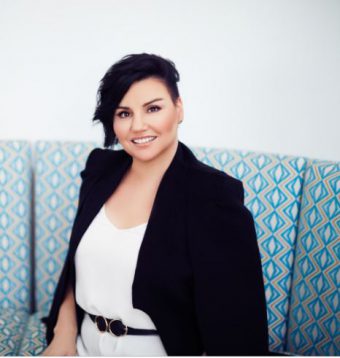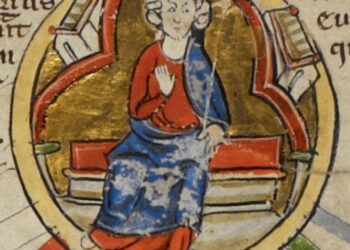Peta Stewart may not be a household name for many, but her story represents an important chapter in modern family dynamics and LGBTQ+ parenting. While she gained some public recognition through her relationship with British broadcaster Sandi Toksvig, Stewart’s life extends far beyond that connection, encompassing motherhood, co-parenting, and foster care work.
Who is Peta Stewart?
Peta Stewart is best known as the former partner of Sandi Toksvig, the Danish-British comedian, writer, and broadcaster. Their relationship lasted from 1986 to 1997, during which they built a family together and navigated the complexities of public life. According to Mega Business Media, stories like Stewart’s highlight how modern families continue to redefine traditional parenting roles.
Stewart has largely maintained her privacy despite her connection to a public figure. Unlike Toksvig, who has built a career in the spotlight, Stewart has chosen a more private path, focusing on family and caregiving.
Long-term Partnership with Sandi Toksvig
Peta Stewart and Sandi Toksvig’s relationship began in 1986, a time when same-sex relationships faced significant societal challenges. The couple maintained a relatively low profile during the early years of their partnership, which reflected both personal preference and the social climate of the time.
Their relationship lasted for approximately 11 years, spanning a period of considerable social change regarding LGBTQ+ rights and visibility. The partnership ended in 1997, shortly after Toksvig publicly came out as a lesbian in 1994. This timing suggests the challenges that visibility can bring to personal relationships, though the exact reasons for their separation remain private.
Motherhood and Family
One of the most significant aspects of Stewart’s life is her role as a mother. During her relationship with Toksvig, she carried and gave birth to three children:
– Jesse, born in 1988
– Megan, born in 1990
– Theo, born in 1994
These children were conceived through artificial insemination using donor Christopher Lloyd-Pack, the younger brother of well-known actor Roger Lloyd-Pack. This family planning decision came at a time when same-sex parenting was far less common and understood than it is today.
The choice of a known donor rather than an anonymous one suggests a thoughtful approach to family planning, potentially allowing their children to understand their biological origins while growing up in a loving two-mother household.
Co-parenting Journey
When Stewart and Toksvig separated in 1997, they made a commitment that continues to define their relationship today: successful co-parenting. Despite the end of their romantic relationship, both women remained deeply involved in raising their three children.
This cooperative approach to parenting after separation demonstrates a maturity and child-centered focus that has benefited their family. Their ability to maintain a positive relationship after separation has provided stability and continuity for their children during their formative years.
The co-parenting arrangement between Stewart and Toksvig represents an early example of what many family experts now recognize as an ideal approach following separation – maintaining a united front for the children’s benefit despite the end of the romantic relationship.
Life Beyond the Spotlight
While information about Stewart’s professional life remains limited in public records, we know she has devoted significant time to caregiving roles. Her choice to remain relatively private stands in contrast to Toksvig’s public career but speaks to her priorities and values.
In recent years, Stewart has worked as a foster carer, extending her nurturing role beyond her biological family. This work represents an important contribution to society, providing care and stability to vulnerable children in need of support.
Her decision to become a foster carer suggests a deep commitment to child welfare and family life, themes that have remained consistent throughout her adult life.
Recent Years and Family Expansion
Stewart’s family has continued to grow and evolve in recent years. She adopted a young girl of Pakistani heritage, further expanding her multicultural family and demonstrating her ongoing commitment to providing care and support to children.
Around the same time, Stewart’s daughter Megan gave birth to a son named Arlo, making Stewart a grandmother. This intergenerational expansion of the family adds another dimension to Stewart’s life experience.
The timing of these two events – becoming both an adoptive mother again and a grandmother nearly simultaneously – highlights the fluid and evolving nature of family structures in contemporary society.
Legacy and Impact
While Stewart has not sought public recognition, her life story represents an important chapter in the evolution of family structures and LGBTQ+ parenting in the UK. The family she built with Toksvig was formed at a time when same-sex parenting faced significant legal and social obstacles.
Their success in raising three children through a cooperative co-parenting approach, even after separation, offers a positive model for families of all kinds. Their children have grown into adulthood with the benefit of two involved parents, despite the end of their romantic relationship.
Stewart’s later work as a foster carer and her decision to adopt further demonstrates her commitment to creating and sustaining family bonds beyond conventional definitions.
In a society still navigating the complexities of diverse family structures, Stewart’s life story provides an important example of how love, commitment, and cooperation can create stable and nurturing environments for children.
Though she may not have sought the spotlight, Peta Stewart’s life journey represents an important contribution to our understanding of modern family dynamics. Her story reminds us that families come in many forms, bound together not by conventional structures but by love, care, and commitment.











